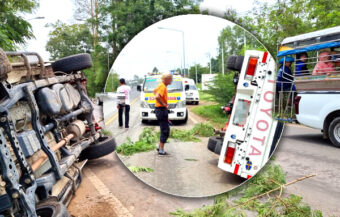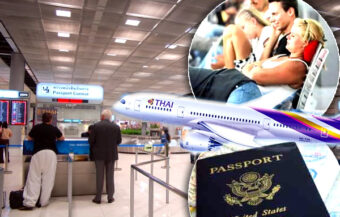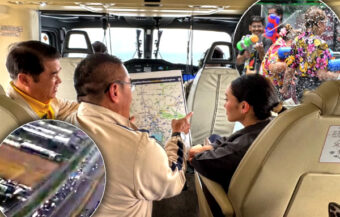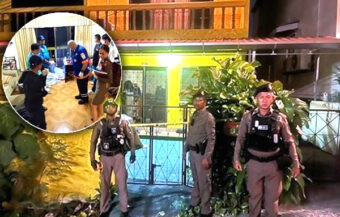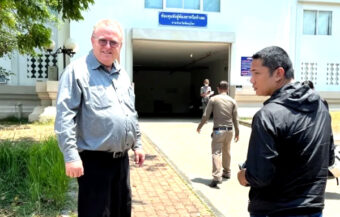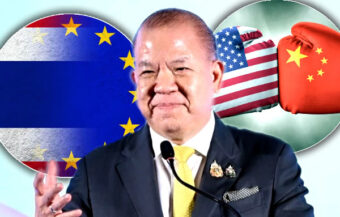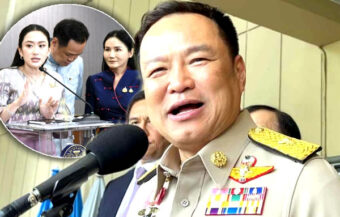Philippines President urged ASEAN leaders not to choose sides between the US and China and to steer an independent course. He spoke of the rise of the ‘dragon in a world still dominated by a soaring eagle’ as the overspilling tensions caused by the trade war at this summit were too great to mask over. The days of global consensus are well and truly over.
The planned announcement of the biggest free trade deal in the world tomorrow at the ASEAN summit is off. As the high-level meeting of world leaders moved onto photo opportunities on Sunday what has emerged more than anything from this ASEAN summit is the sense that the bloc finds itself pulled between the US and China in what are deepening divisions between the two powers. The UN leader, Antonio Guterres, warned at the summit that the world faced the real prospect of being fractured into two spheres with separate economies, currencies and internet systems.
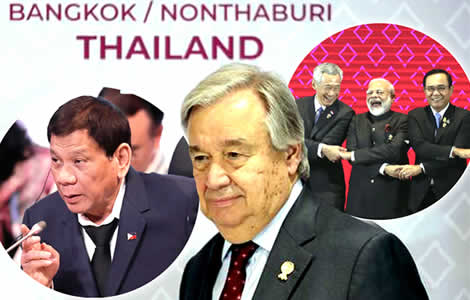
The consensus from the ASEAN Summit in Muang Thong Thani outside Bangkok as leaders of the 10 nation bloc posed for a photocall on Sunday was that the expected breakthrough on the Regional Comprehensive Economic Partnership deal would not materialise as hoped for on Monday even with the framework to be put in place in the coming months.
RCEP free trade deal must wait until February 2020
It is now expected that it will be February 2020 before that point is reached as it is understood that India at the last minute, raised questions and dug its heels in preventing the deal being put to bed.
Hopes faded on Saturday as India held out
Hopes already fading on Saturday were finally dashed when the Thai government spokeswoman briefed reporters looking forward to the prospect of a historic day on Monday. ‘We don’t have a conclusion yet. Once there is one it would be announced,’ she said at first but then confirmed: ‘Commerce ministers are still discussing outstanding issues. The signing is expected around February next year.’
Indian Prime Minister – negotiating sincerely but wants a better deal for its service industries
However, Indian Prime Minister Narendra Modi, looking much relieved at Sunday’s photoshoot, did express his country’s continued commitment to finalising a deal and promised that India was ‘engaged in negotiation with sincerity’ as it pushed for greater access for its burgeoning services sectors across the 10 nation ASEAN bloc and the six other Asia Pacific economies.
New world trade bloc being painted at this summit as a Chinese vehicle to dominate Pacific trade
The final efforts to clinch the deal which would create the biggest free trade area in the world saw the RCEP interpreted more and more as a Chinese vehicle which is a cause for concern.
Indeed, the trade war between China and the United States was the elephant in the room at this summit as ASEAN becomes a pivotal arena where the two great powers appear to be locking horns and vying for influence.
Philippines President summed up the situation as a battle between the Dragon and the Eagle
President Duterte of the Philippines characteristically did not pull any punches when he put the rising tensions between the two powers in colourful terms. He described the current situation as ‘the changing regional landscape which recognises the rise of the dragon in a world still dominated by a soaring eagle.’
UN Secretary-general decidedly pessimistic
The Secretary-General of the United Nations, Antonio Guterres, was even plainer and stark in his assessment of the current situation.
The UN leader whose organisation is facing a financial crisis after the US has both cut funding to it and delayed payments along with other countries was decidedly pessimistic. He said the world faced being split in half between US and Chinese spheres of influence.
He painted a dark picture of where the world is at present as the US pulls away from what was accepted as the established world global order. This is an order that US President Trump sees as a world that benefited China at the expense of the United States.
‘I see now the concern emerging on the horizon, the possibility of a great fracture with the world’s largest economies splitting the globe into two, each with its own dominant currency, trade and financial rules, its own internet and artificial intelligence capacities and its own zero-sum geopolitical and military strategies,’ Mr Gutteres warned.
UN leader concerned about climate change
The UN also underlined his concerns about climate change saying that 4 of the countries in the world most impacted according to scientists proposing the theory are within the ASEAN region. He called on Asian leaders to scale back to use of coal as a fossil fuel.
A recent ASEAN report showed that 6 ASEAN countries are presumed to be most impacted by climate change warnings. These are Thailand, Myanmar, the Philippines, Vietnam, Malaysia and Indonesia.
US President Donald Trump is on record as being a climate change sceptic as are many serving in the US administration which abandoned the Paris climate accord in June 2017.
Further reading:
Biggest free trade pact in the world being readies for launch at the ASEAN summit on Monday

